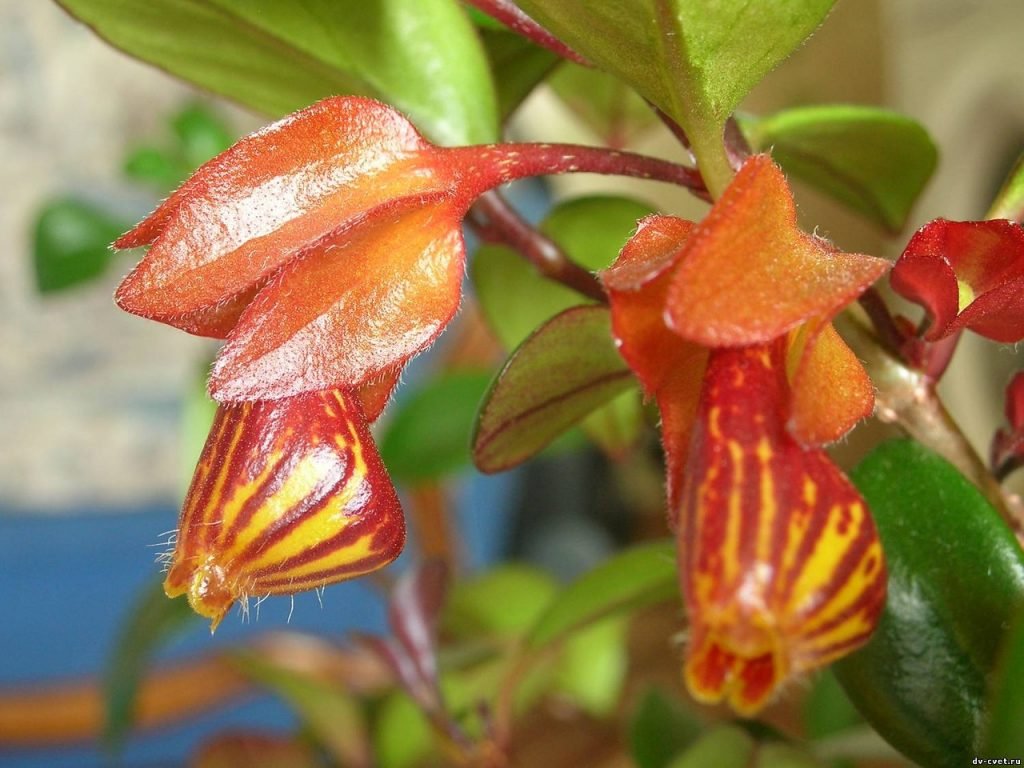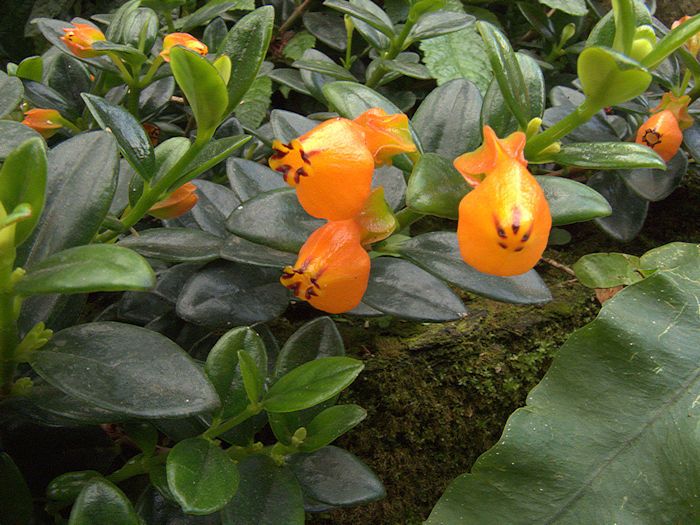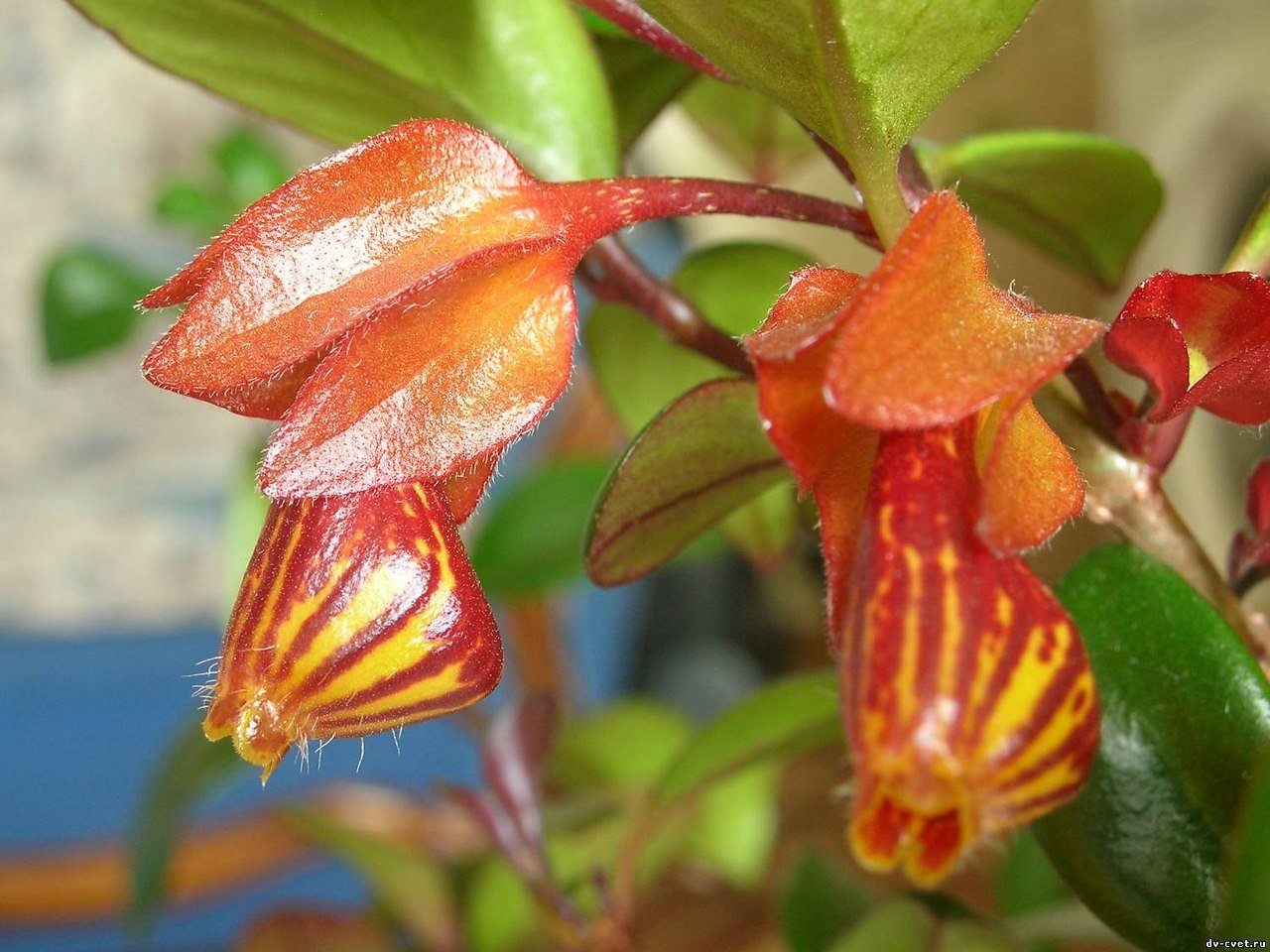Goldfish Plants (Columnea Gloriosa), with their unique, vibrant tubular blooms resembling playful goldfish, are a captivating addition to any plant collection. Known also as the Flying Goldfish Plant, these tropical beauties can transform your indoor spaces into a lush, blooming paradise. Here’s an in-depth guide on how to provide the best care for your Goldfish Plant, ensuring it thrives.

Goldfish Plant Overview
The Goldfish Plant, scientifically known as Columnea Gloriosa, stands out in the plant world for its uniquely charming characteristics. With its lush foliage and blooms that mirror the playful silhouette of a goldfish.
A Glimpse into its Natural Habitat and Characteristics
Originating from the warm, humid rainforests of Central and South America, the Goldfish Plant is accustomed to the dappled light and moisture-rich environment of the forest undergrowth. This background plays a crucial role in how it should be cared for in a home setting. The plant exhibits an arching growth pattern, often reaching up to three feet in length, making it an ideal choice for hanging baskets where its cascading vines and vibrant blooms can be displayed to stunning effect.
Blooming Resemblance to Goldfish
The most striking feature of the Goldfish Plant is its blooms. These small, yet eye-catching tubular flowers, predominantly in shades of bright orange and red, bear a striking resemblance to leaping goldfish, complete with flared tails and open mouths. This unique characteristic is not only a visual delight but also a conversational piece, adding an element of whimsy to wherever it’s placed. The blooming season of the Goldfish Plant, which typically occurs in the spring and summer, transforms the plant into a vibrant display of color and shape, bringing a touch of the tropical rainforest to your indoor garden.
Versatility in Growing Locations
While primarily grown as an indoor plant, particularly in climates that experience cooler temperatures, the Goldfish Plant can also thrive outdoors in the right conditions. In regions with mild, frost-free climates, it can be grown outside year-round, provided it is placed in a location that mimics its native habitat – warm, sheltered, and away from direct sunlight.

Goldfish Plant Care Essentials
Caring for a Goldfish Plant (Columnea Gloriosa) involves understanding its specific needs and creating an environment that mimics its natural habitat as closely as possible. Here are the key care essentials to ensure your Goldfish Plant thrives and brings its full tropical allure to your space.
Light Requirements: Striking the Right Balance
One of the most crucial aspects of Goldfish Plant care is providing the right amount of light. These plants flourish in bright, indirect sunlight. The ideal spot is near an east or west-facing window, where they can receive filtered sunlight that mimics the dappled light of their rainforest origins. Direct, harsh sunlight can damage the leaves, while too little light can hinder flowering.
- Tip: If natural light is limited, consider using grow lights to supplement the plant’s light needs. Rotate the plant regularly to ensure even exposure.
Soil and Watering: Keeping the Balance
Watering and soil quality are pivotal to the health of your Goldfish Plant. They prefer well-drained soil that holds enough moisture without becoming soggy. A mix designed for African violets or a blend of peat moss, perlite, and vermiculite can provide the right balance.
- Watering: The key is to water consistently but avoid overwatering. Let the top inch of the soil dry out before watering again. This plant likes consistent moisture, but soggy roots are a big no-no. During the blooming period, ensure the soil stays slightly more moist to support the vibrant flowers.
- Tip: Using lukewarm water can prevent shocking the plant’s roots, especially in colder months.
Temperature and Humidity: Creating a Tropical Atmosphere
Goldfish Plants enjoy a warm and humid environment. They thrive in temperatures between 65°F and 80°F, which makes them well-suited to most indoor settings. However, they do not tolerate cold drafts or sudden temperature changes well.
- Humidity: In their native rainforest habitat, these plants are used to high humidity. To replicate this, consider using a humidifier, placing the plant on a pebble tray filled with water, or regularly misting it. Bathrooms with natural light can also be a great location due to their naturally higher humidity levels.
Fertilizing for Healthy Growth
Fertilization is important for Goldfish Plants, especially during their growing and blooming seasons. Use a balanced, water-soluble fertilizer every two weeks during spring and summer. Reduce this to once a month in fall and winter. Over-fertilizing can harm the plant, so it’s essential to follow the recommended dilution rates.
In summary, the care of Goldfish Plants centers around mimicking their natural tropical environment as much as possible. This means providing them with bright, indirect light, well-drained soil, consistent moisture without overwatering, warm temperatures, and ample humidity.
Pruning for Health and Beauty
Pruning is an essential aspect of Goldfish Plant (Columnea Gloriosa) care, contributing significantly to both its health and aesthetic appeal. This practice not only helps maintain the desired shape and size of the plant but also encourages more vigorous growth and blooming.
- Timing and Technique: The best time to prune your Goldfish Plant is in early spring, just before the onset of the growing season. Use clean, sharp scissors or pruning shears to remove any dead or yellowing leaves, as well as leggy or overgrown stems. This not only tidies up the plant but also redirects energy to healthier growth areas.
- Promoting Fuller Growth: When pruning, consider cutting back stems to just above a leaf node. This encourages the plant to branch out, leading to a fuller, bushier appearance. Pruning is also an opportunity to shape your Goldfish Plant, helping it to achieve a more balanced and aesthetically pleasing form.
Propagating Goldfish Plants
Propagation of Goldfish Plants is a rewarding and straightforward process. It’s an excellent way to expand your collection or share these delightful plants with friends and family.
- Using Stem Cuttings: The most common method of propagation is through stem cuttings. Choose a healthy, non-flowering stem and cut a 4-6 inch segment just below a leaf node. Remove the leaves from the lower half of the cutting.
- Rooting Process: You can root the cutting in water or directly in soil. For water rooting, place the cutting in a jar of water, ensuring that at least one leaf node is submerged. Change the water every few days. If rooting in soil, plant the cutting in moist, well-draining potting mix and cover with a plastic bag to create a humid environment. Place in bright, indirect light.
Growing Goldfish Plants From Seed
While more challenging than other methods, growing Goldfish Plants from seed can be a fascinating endeavor for a patient gardener.
- Seed Preparation: Start by soaking the seeds for a few hours to soften the outer coating. Prepare a seed-starting tray with a well-draining soil mix and scatter the seeds on the surface, lightly pressing them into the soil.
- Creating the Right Conditions: Cover the tray with a clear plastic lid or plastic wrap to maintain humidity. Place the tray in a warm location with bright, indirect light. Keep the soil consistently moist but not waterlogged. Germination can take several weeks, so patience is key.
Potting and Repotting: Ensuring Growth
Proper potting and timely repotting are crucial for the health and growth of your Goldfish Plant.
- Choosing the Right Pot: Select a pot with drainage holes to prevent water from accumulating at the bottom. The pot should be only slightly larger than the root ball of the plant, as Goldfish Plants prefer to be somewhat root-bound.
- Soil and Repotting Frequency: Use a well-draining, peat-moss-based soil mix or a mix formulated for African violets. Repot your Goldfish Plant every two to three years to refresh the soil and provide more room for root growth. Gently loosen the roots when repotting and trim any that are dead or excessively long.
- Best Time to Repot: The ideal time for repotting is in the late winter or early spring before the plant enters its active growing period. This allows the plant to quickly recover and adapt to its new environment.
Overwintering: Preparing for the Colder Months
Maintaining Health in Winter
During winter, reduce watering but maintain high humidity. Misting the plant or placing it in a humid bathroom can help. Ensure the plant is kept in a warm area, away from cold drafts.
Dealing with Pests and Diseases
Common Challenges
Goldfish Plants may encounter pests like aphids, mealybugs, and spider mites. Regular checks and treatments with neem oil or insecticidal soap can keep these pests at bay. Diseases like botrytis bunch rot and mosaic virus can also affect Goldfish Plants. Ensuring proper air circulation and avoiding overwatering are key preventive measures.
Troubleshooting Common Issues
Addressing Curling Leaves and Flower Loss
Curling leaves or sudden flower loss in Nematanthus Plants can be due to improper watering, extreme temperatures, or low humidity. Monitoring these factors closely and adjusting your care routine can help rectify these issues.

Goldfish Plant FAQ: Mastering Care for Your Nematanthus
1. What Makes Goldfish Plants Unique as Houseplants?
Goldfish Plants are renowned for their intriguing flowers that resemble tiny goldfish, making them a standout among houseplants. They are tropical plants, thriving indoors with proper care. Their cascading nature makes them perfect for hanging baskets, adding a bright, lively touch to any space.
2. What Are the Ideal Conditions for Growing Goldfish Plants Indoors?
To grow and care for this plants successfully, provide bright, indirect light. Direct sunlight can scorch the leaves, while insufficient light can hinder blooming. These plants like to be slightly root-bound in containers and prefer well-draining potting soil to prevent soggy soil conditions.
3. How Often Should I Water My Plant?
Water your Goldfish Plant every two weeks, allowing the top inch of soil to dry out between waterings. Overwatering can cause problems like root rot, so it’s crucial to ensure the soil is moist but not waterlogged. Use room temperature water to avoid shocking the plant with cold water.
4. What Are the Fertilization Needs of Goldfish Plants?
Fertilize your plant every two weeks during the growing season with a balanced houseplant fertilizer. This will support vigorous growth and abundant flowering. Reduce feeding in the winter months when growth naturally slows down.
5. How Do I Encourage My Goldfish Plant to Bloom?
To encourage your Nematanthus Plant to bloom, provide adequate light and consistent care. These plants thrive in bright, indirect light and need a balanced watering schedule. Ensure the plant is not stressed by extreme temperatures or improper watering, as stress can hinder blooming.
6. Are Goldfish Plants Prone to Any Diseases or Pests?
Goldfish Plants are relatively hardy but can be susceptible to pests like aphids and spider mites. Regularly inspect your plant and treat any infestations with insecticidal soap or neem oil. Diseases are less common but can occur if the plant is kept in soggy soil or overly humid conditions.
7. How Can I Propagate My Goldfish Plant?
Propagate your Goldfish Plant through stem cuttings. Use a rooting hormone to encourage root development and place the cutting in a moist growing medium. Once rooted, plant in potting soil and care for it as you would a mature plant.
8. What Are the Signs My Goldfish Plant Needs Repotting?
Repot the Goldfish Plant every two to three years or when you notice signs of root-bound growth, such as roots growing through drainage holes or a decline in plant vigor. When repotting, choose a container only slightly larger than the current one, as Goldfish Plants do well when slightly root-bound.
9. Can Goldfish Plants Be Grown Outdoors?
While Nematanthus Plants are primarily indoor plants, they can be grown outdoors in a container or hanging basket in climates where temperatures do not drop below freezing. In outdoor settings, ensure they are placed in a spot with bright, filtered light and are protected from harsh direct sunlight.
10. What Should I Do If the Leaves of My Goldfish Plant Turn Brown?
If the leaves of your Goldfish Plant turn brown, it could be due to underwatering, low humidity, or too much direct sunlight. Adjust your watering schedule, increase humidity around the plant, or move it to a location with more suitable lighting.
Introduction
Nicki Mann, based in Portland, Oregon, is a good writer and houseplant enthusiast. With her background in environmental science, Nicki specializes in indoor gardening, focusing on sustainable and organic practices.
Experience
Her interest in houseplants began in her mid-twenties, leading to a career writing articles about indoor plant care and eco-friendly gardening for various websites.
Education
Nicki holds a Bachelor of Science in Environmental Studies from the University of Oregon, which underpins her approach to indoor gardening. She continually enhances her knowledge through horticulture and environmental sustainability workshops.
Personal Life
Nicki, an avid nature lover, enjoys exploring the Pacific Northwest's trails. She's active in community gardening and lives with her two rescue cats, who share her interest in her growing collection of houseplants.


